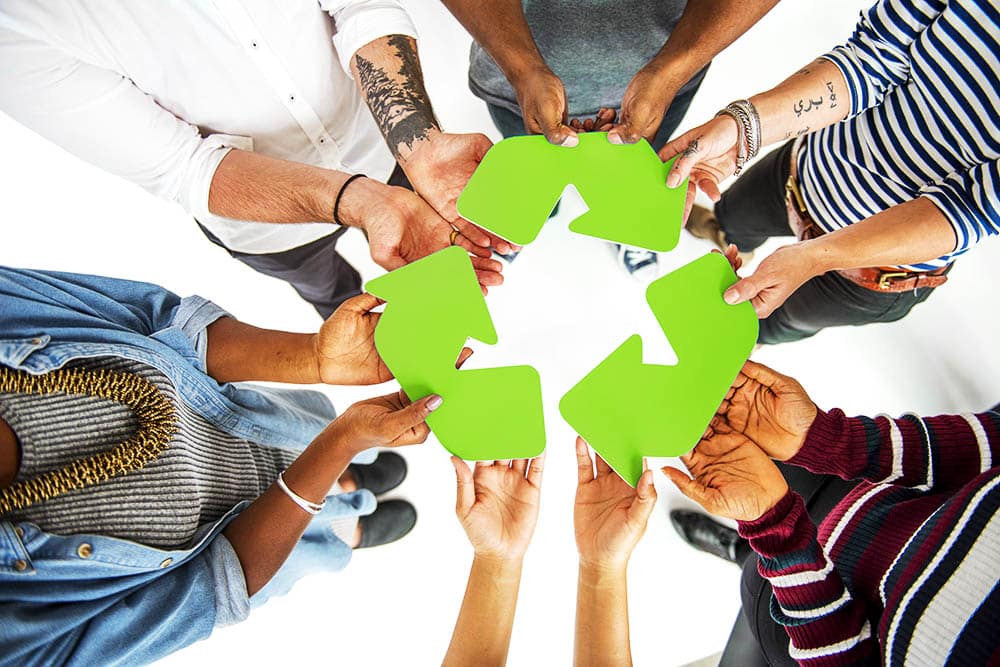The Urgent Need for Collaboration in Saving Our Planet
Our planet is facing numerous environmental challenges, such as pollution, deforestation, climate change, loss of biodiversity, and many more. These challenges not only threaten the well-being of human beings but also jeopardize the survival of countless other species. It is imperative that we take collective, sustainable action to address these issues and work towards a better future for ourselves and future generations. In this article, we discuss why a collaborative effort is key in creating an international environment for a sustainable future.
The Importance of Collaboration in Environmental Sustainability
Collaboration involves individuals, communities, and organizations working together towards a common goal. In the case of environmental sustainability, collaboration is essential because no one person or organization can address environmental issues alone. Global environmental challenges require a global effort, which can only be achieved through collaboration. Collaboration allows for the pooling of resources, knowledge, skills, and expertise, leading to more effective problem-solving and the development of innovative solutions.
The Benefits of Collaboration
Collaboration in environmental sustainability brings many benefits. Some of these benefits include:
– Enhanced Learning: Collaboration creates an environment for learning and sharing of knowledge, skills, and expertise. This leads to the development of new ideas and better problem-solving strategies.
– Efficient Use of Resources: Collaboration enables the efficient use of resources. By pooling resources, organizations can achieve more than if they were working alone.
– Increased Impact: Collaborating with other organizations provides opportunities to achieve a bigger impact than working alone. Working collaboratively can bring positive change to a larger community or region.
– Increased Funding: Collaboration provides the opportunity for securing additional funding, which can help provide more resources to tackle environmental challenges.
The Challenges of Collaboration in Environmental Sustainability
While collaboration can bring many benefits, it can also present some challenges. Some of these challenges include:
– Diverse Perspectives: Collaboration brings together individuals and organizations with different perspectives, goals, and priorities. These differences can lead to conflicts and impede progress.
– Communication: Effective communication is crucial for collaborative efforts to be successful. However, communication can be a challenge when working with different cultures and languages.
– Coordination: Collaboration requires coordination of efforts and resources. This can be challenging when working with multiple stakeholders, each with their own timelines and schedules.
– Resource Allocation: Collaboration requires the pooling of resources. However, decisions about how to allocate these resources can be challenging, especially when there are different priorities.
Examples of Successful Collaborations
There have been many successful collaborations in environmental sustainability. One such example is the Global Environmental Facility (GEF), an organization that works with governments, NGOs, and other stakeholders to support global environmental projects. The GEF has funded over 4,500 projects in 170 countries, helping to address issues such as biodiversity loss, deforestation, and climate change.
Another successful collaboration is the Great Green Wall Initiative, which aims to plant an 8,000 km wall of trees across the Sahel region of Africa. This initiative involves multiple stakeholders, including local communities, NGOs, and governments. The Great Green Wall Initiative is a great example of how collaboration can bring about significant environmental change.
How to Build Successful Collaborations for Environmental Sustainability
Building successful collaborations for environmental sustainability requires a deliberate effort. Some tips for building successful collaborations include:
– Identify Shared Goals: Collaborations are most successful when all stakeholders share a common goal. When working to address environmental challenges, identify the overarching goals that everyone can contribute towards.
– Build Relationships: Building relationships is an essential component of successful collaboration. Take the time to understand each other’s perspectives, and build trust and respect.
– Define Roles and Responsibilities: Clear roles and responsibilities are necessary in successful collaboration. Establishing these early on can help to minimize conflicts over task allocation.
– Communication and Coordination: Effective communication and coordination are key to successful collaboration. Identify the channels for communication and the mechanisms for sharing information and resources.
– Build Flexibility: Collaboration requires flexibility on the part of all stakeholders. Be prepared to adjust your plans and course-correct when necessary.
The Role of Governments in Promoting Collaborations for Environmental Sustainability
Governments can play a significant role in promoting collaborations for environmental sustainability. Governments can:
– Provide Funding: Governments can provide funding to support collaborative projects. This funding can incentivize organizations to work together and provide the resources needed for projects to be successful.
– Develop Policies: Governments can help set the agenda and develop policies that promote environmental sustainability. These policies can create a framework for collaborative efforts to be successful.
– Facilitate Collaborations: Governments can facilitate collaborations by bringing stakeholders together, providing coordination and support where necessary.
– Provide Leadership: Finally, governments can provide leadership by setting the example of how to collaborate effectively. This can inspire other stakeholders to work towards shared goals.
Conclusion
In conclusion, environmental sustainability is a global challenge that requires a collaborative effort. Collaboration brings many benefits, including enhanced learning, efficient use of resources, increased impact, and increased funding. However, collaboration can also present challenges that must be overcome for projects to be successful. To build successful collaborations for environmental sustainability, identify shared goals, build relationships, define roles and responsibilities, communicate and coordinate effectively, and build flexibility. Governments also have a significant role to play in promoting collaborations by providing funding, developing policies, facilitating collaborations, and providing leadership. Working together, we can create a sustainable future for ourselves and future generations.
